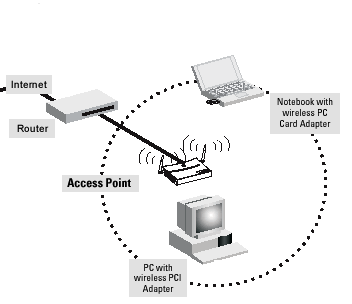


Wi-Fi standards are designed to allow a nonstationary user's connection to jump from one access point to another, though some users and applications may experience brief dropouts. The most common security method for a WLAN is encryption, including Wired Equivalent Privacy (WEP) and Wi-Fi Protected Access (WPA), with WPA2 as the standard authentication method.įor any sized network, access points can extend the area of access. However, determined adversaries may be able to join networks by spoofing an authorized address. The most basic method of securing a WLAN is to use MAC addresses to disallow unauthorized stations. To access a WLAN, a bad actor must simply be within range of the network. With a wired network, a bad actor must gain physical access to an internal network or breach an external firewall. As seen in the below image:Īs SSID's increases on 802.A WLAN is more vulnerable to being breached than a physical network. This stands as the BSSID for the first SSID being broadcasted on 802.11b/g radio. When joined back with OUI, it looks as below: XOR the first four digits with 8 i.e 1000:Ĩ.

Drop the first character from the UAA, i.eĤ. To find a vendor/manufacturer from an OUI, please visit:ģ. Organizationally Unique Identifier (OUI) is a 24-bit number that uniquely identifies a vendor, manufacturer, or other organization globally or worldwide. Next, remove the first six(6) characters from OUI from the wired MAC address. As AP-135 come with two ethernet ports, then the MAC address of second ethernet port would be d8:c7:c8:cc:43:2 (4+1) = d8:c7:c8:cc:43:2 5. Lets take one of the wired MAC address shown in the above image. If you have configured, then either look physically on the AP or we can take it from "show ap database long" CLI command, as shown below: With an example, lets understand how the BSSID is derived from the wired MAC address of an AP:īy default, the wired MAC address of an Access Point appears as a AP name. Two ethernet ports gives double the amount of available MAC addresses than one port.

Underlying limitation is that each BSSID needs a MAC address that is derived from the ethernet port MAC. Total BSSID's including b/g and a radio = 16 SSIDs per radio: (Number of Ethernet ports * 16) / number of radios on an AP.įor example, for AP-105 which is a single ethernet and dual-radio AP: So, as we know Aruba Access Points are capable of broadcasting multiple WLAN's on a single radio (b/g or a) and thereby the number of SSID's per radio of an Access Point: When a wireless client associates to an AP, it sends traffic to the AP’s Basic Service Set Identifier (BSSID) which is usually derived from Access Points MAC address. Environment : This article applies to Aruba Mobility Controllers, Aruba Campus and Instant Access PointsĪPs advertise WLANs to wireless clients by sending out beacons and probe responses that contain the WLAN’s SSID and supported authentication and data rates.


 0 kommentar(er)
0 kommentar(er)
